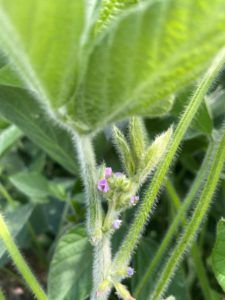Tar Spot & White Mold…
By Mike Sankey | August 17, 2022
As we get closer to fall, the days are getting shorter and 90-plus degree days are getting numbered. The nights are getting cooler, and many have noticed that the morning dew is much heavier and is lasting a lot longer in the mornings. Although this is all common knowledge, these conditions can cause problems for producers.
Tar Spot
By now we’ve all heard of and probably even seen tar spot on corn. If you had tar spot in a particular field last year, you can count on it showing up in the same field this year as well. Thankfully in most parts of the state, tasseling and pollination are wrapping up so corn is in full reproductive stage and in “cob-fill” mode. So why are we talking about tar spot? Tar spot infects the plant when there is prolonged leaf wetness. So, this heavy dew and foggy mornings are factors that promote the growth of tar spot, and what tar spot does is it basically makes the plant “shut-down” early, leaving you with plants that didn’t make it to full maturity, or very low test weight corn at the elevator depending on when the infection moves in. Many producers have turned to fungicides to help combat against tar spot, and they can help, but they are not the “silver bullet” that many are looking for. Going forward varieties will be rated against tar spot; when selecting varieties for 2023 be sure to take note this fall what percentage of your acres got infected.
Through collaboration from multiple Universities, they have compiled data on Tar Spot here to show sites of infection.

White Mold While white mold risk has been fairly low so far this year, we are starting to see increased risk as we move forward. Up until recent weeks, soybean canopies have stayed fairly dry, but like we talked about before with the increased leaf wetness and humidity, we can expect to see white mold move in on the decaying flowers of soybeans. White mold infects the flowering sites by girdling the stem and cutting off the xylem and phloem shutting down the upper part of the plant eventually killing it. UW has created a tool, called Sporecaster, to help determine risk in your specific fields with white mold. If you’ve had white mold in your beans before, more than likely you’re planting soybeans with good ratings against white mold. While wide row spacing, reduced plating populations, and fungicides can help, good genetics is the most important start to combat white mold. If you have any questions reach out to your Legacy Seeds representative and we can talk or walk your fields with you and answer any of your questions.

